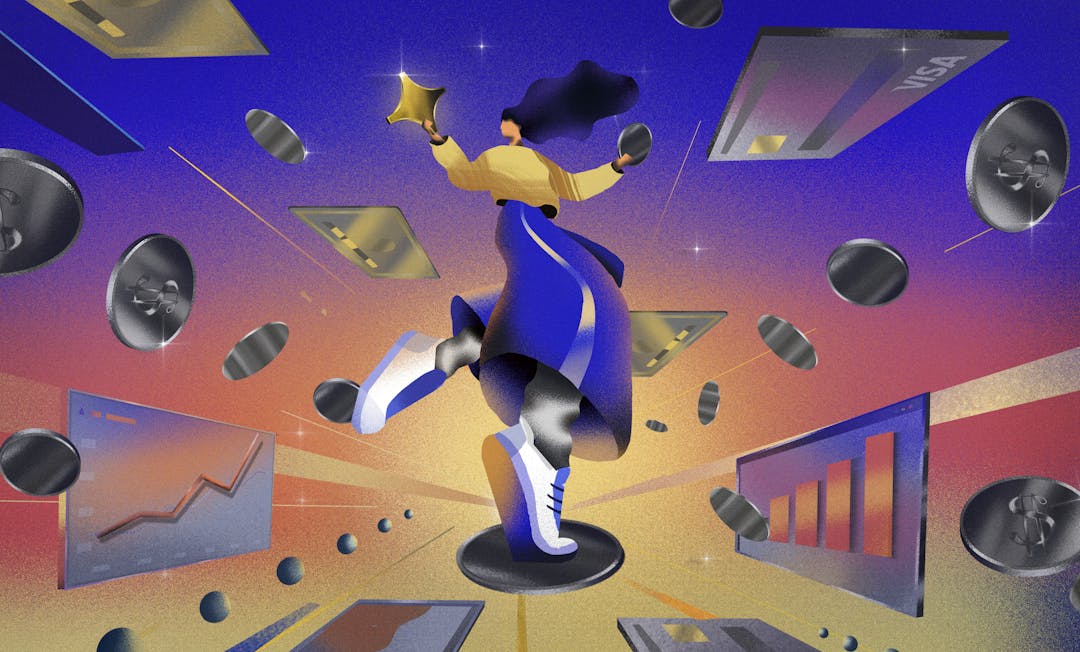Over her more than twenty-year career, Amy Konary has become an expert within the SaaS subscription space. She saw the importance of the subscription economy since her time as an industry analyst for IBC, running the practice on SaaS there for 19 years.
Today, Amy is the VP and chair of The Subscribed Institute at Zuora, a think tank dedicated to education executives in the subscription business.
At a recent event, Amy shared her expertise on driving expansion and retention with flexible, usage-based plans for subscription-based businesses. She revealed that in today’s modern SaaS landscape, success is no longer defined by your product, but the people that use it.
In the subscription economy, it’s not about the [packaging], it’s not about the CD, it’s not about the code, it’s actually about the people using the code and what they’re doing.
Throughout her presentation, Amy revealed how focusing on the customer and their personalized experience paves the way to success in the subscription economy when product-centric strategies fall short.
What is the subscription economy?
The Subscription Economy is a concept that comes from from Zuora’s Subscription Economy Index that reflects the growth metrics of hundreds of subscription companies in modern industries including SaaS and ecommerce.
The subscription economy refers to the general trend of companies shifting from the traditional pay-per-product model to a subscription business model. The subscription model involves selling recurring subscriptions to consumers in exchange for access to a product or service over time.
The new subscription economy is different from the old software industry
In many industries, the prevalent thinking is that companies should focus on delivering a specific product or solution as many times as possible to as many people as possible.
Today, it’s not about your product or your code anymore, it’s about how individual people get value out of subscribing to your product.
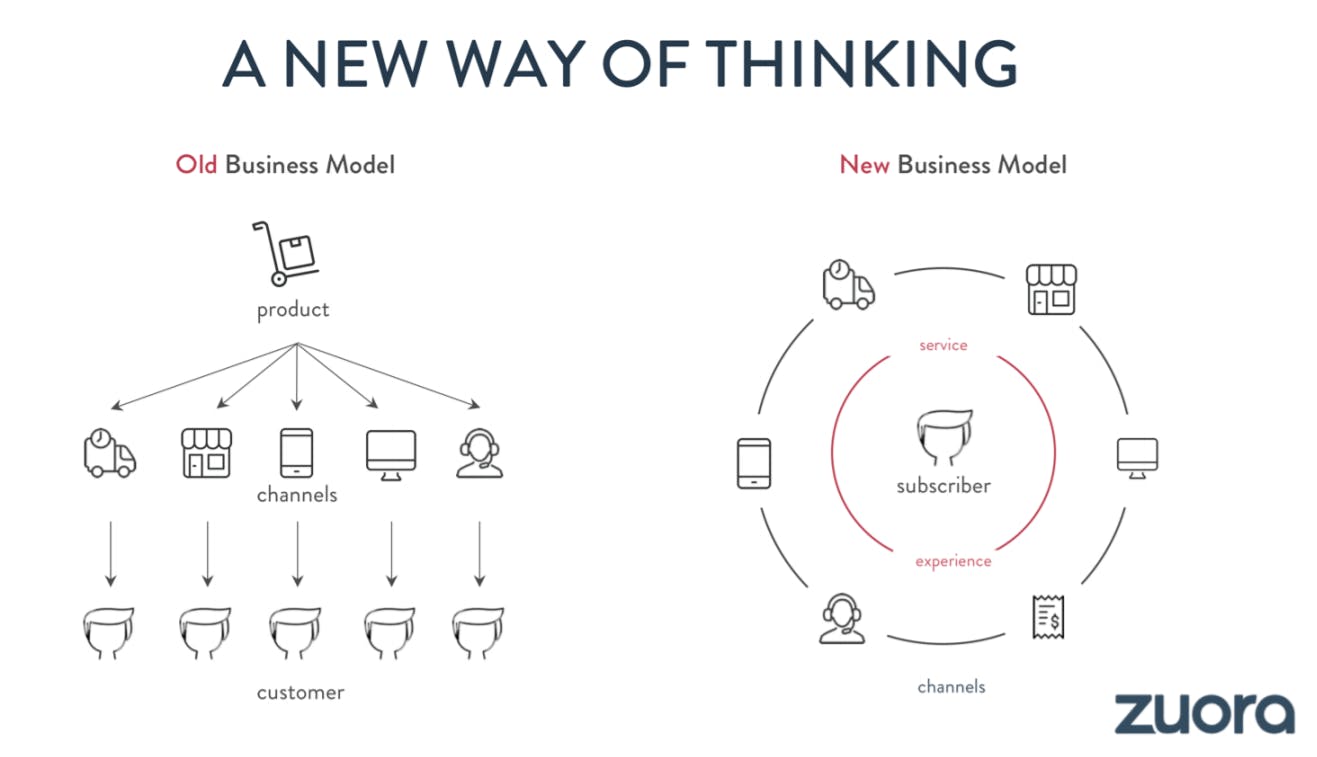
Moving to a mode where the subscriber is at the center requires a lot of changes within your organization. It requires a lot of changes in your channel. Requires changes in your innovation department. Changes in marketing. Changes how you sell. Changes in how you represent the value that it is that you provide out to the world.
A strategy that is people-focused instead of product-focused involves a shift in how companies view their product experience:
- It’s about access not ownership
- It’s about customization not generalization
- It’s about constant improvement, not planned obsolescence
- It’s about automating improvement and relationship building
- It’s not about perfect, it’s about responsive
By building your SaaS offering around the people that will use it, you enable your business to be responsive to the demand for a customized customer experience over a generalized one.
While customers in previous decades have been happy with a preset, generalized product, today’s users expect software to:
- Cater to their needs
- Be delivered and updated instantly and seamlessly
- Solve a specific problem they’re facing
So instead of “We provide this amazing, slick, great product that clicks all of these different buttons,” it's “We actually provide an experience for you. We solve a problem for you, the customer.”
The rise of customer-driven subscription models in the industry is clear as companies have moved over to software as a service or cloud services. By focusing on the personalized needs of customers, businesses increase their value and build longer-lasting relationships by connecting their revenue growth directly to individual sets of customer expectations.
Our customers are all people. They’re all people.
A key part of making sure users feel valued for their personal needs and solutions lies in behavioral economics and behavioral science. By resisting the urge to distill human experiences down to data points and instead focusing on how people feel about and respond to a product, companies can shift from planned obsolescence to a revenue model centered on constant improvement.
Thankfully, as the market and industry for digital products grow, it becomes increasingly easy to gather customer feedback on usage and see how they’re benefiting from it. This is a sustainable way to drive subscription growth over time.
And, unlike physical-product-based companies, businesses can collect this without the customer having to respond to a physical product they received, speeding up the information exchange.
Instead, companies can automate relationship-building by regularly collecting user information in real time based on how they use individual products to solve their unique demands and problems.
Real-time, experiential data collection also allows companies to be more responsive when launching new products. But it requires yet another shift in how we view product release.
Instead of the old mentality that engineers had to perfect a product before it could be released, successful subscription companies understand that it’s less about being perfect and more about being responsive to user feedback.
This requires changes within your organization, changes in your channel, and changes in your innovation department.
It’s about building relationships and ongoing brand experiences, as opposed to big blitz launch days like it used to be in the past...It’s not about selling products. It’s about selling outcomes. It’s about customer lifetime value and systems of innovation.
You have to grow your relationships, not your transactions
Using data from the hundreds of large subscription-based companies that use Zuora to improve their businesses, Amy provided insight into how to shift strategies from transaction-centric to relationship-focused and why this provides more growth value over time.
The data, built by Chief Data Scientist Dr. Carl Gold, reflects the user change, churn, and growth rates of more than 1,000 company years in subscription data from 600 companies.
What they are doing that's making them so successful is that they're growing relationships and not transactions.
For these companies, 70 percent of their revenue comes after customers sign up as subscribers, from events such as upsells and cross-sells, and not from the initial sign up.
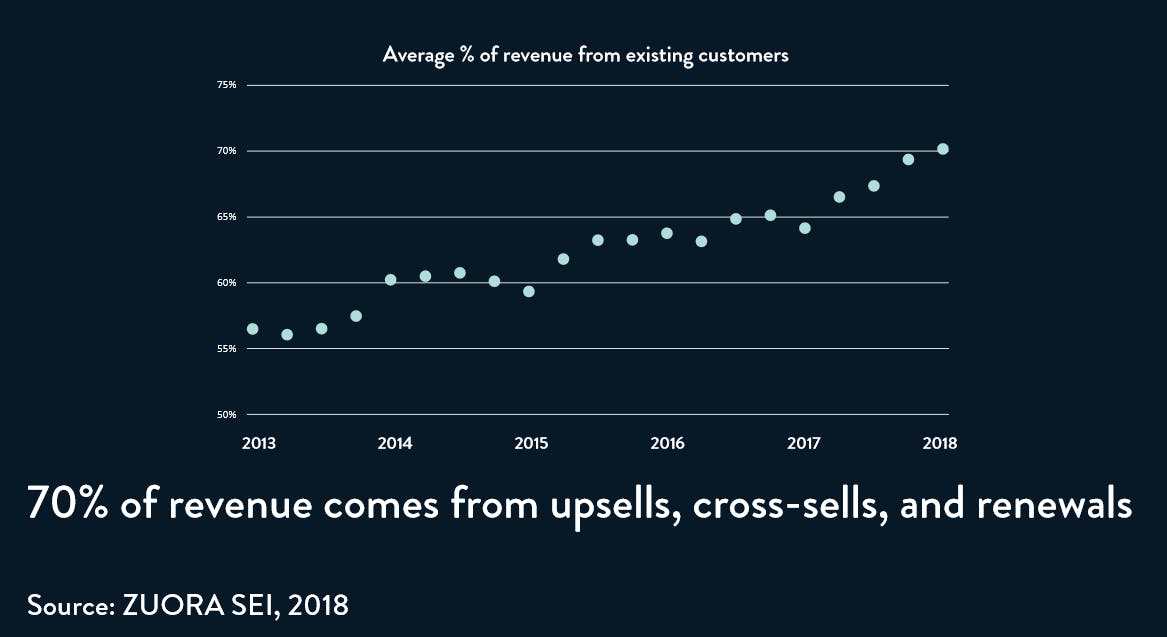
While old strategies were built on a pyramid model from the bottom up---where the largest revenue generation was at the beginning of the relationship and customers contributed less and less to the bottom line over time---the subscription economy has flipped that on its head.
Instead, when companies focus on customer relationship management (CRM) and building relationships over time, they’re working from the top of the pyramid down and laying the groundwork for customers to pay into their subscription service more as time goes on.
To accomplish this, companies have to focus on two fundamental growth levers:
- Charging subscribers more
- Growing the number of subscribers you charge
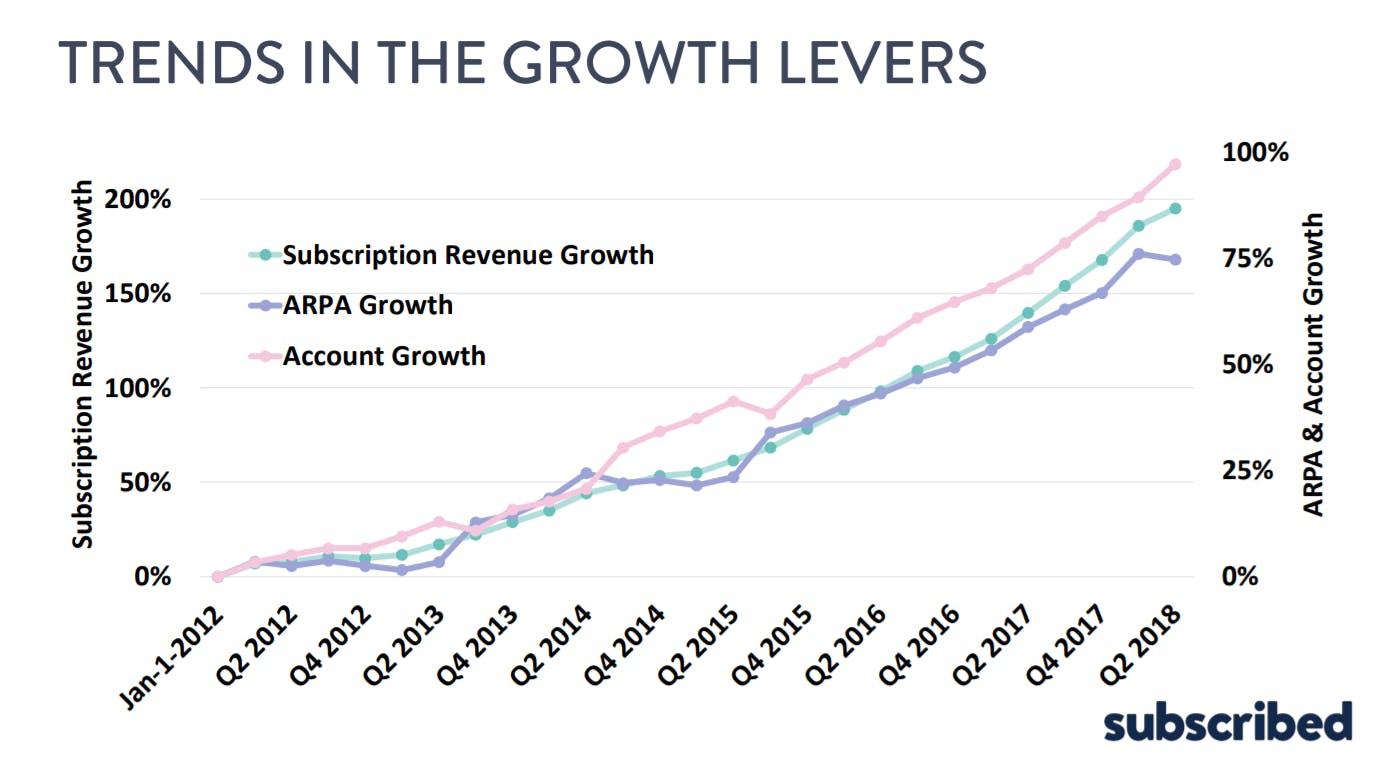
Businesses in the past were primarily focused on the second growth lever---what Amy refers to as the “wild west” of growth stages—where you’re just trying to get as many people in the door as possible, but not necessarily focusing on keeping them in the building when they’re there.
This is particularly true of B2C SaaS companies, but is also prevalent in B2B spaces, too.
Company maturity happens when the strategy shifts from trying to get as many bodies in the door as possible to bringing your customers on a journey and helping shape a specific kind of outcome.
At the center of this strategy shift is a recognition of the kind of subscription changes that are happening and understanding how these changes grow revenue.
Since 2016, the number of changes per subscriber has doubled.
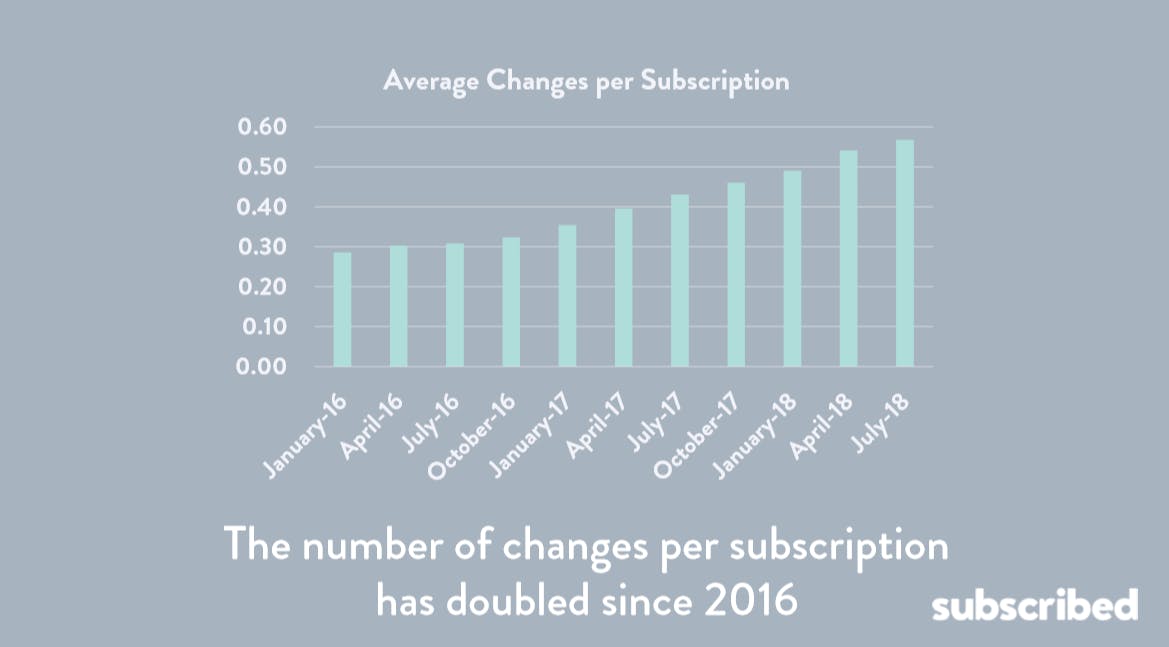
These changes included:
- Pauses in membership for a short period of time
- The addition of new services and upsells
- Down sells (which aren’t great, but are better than lost business)
- Suspensions for longer periods of time
- The resuming of services
- Pricing and packaging changes
- Cancellations
While some of those changes---such as down sells and cancellations---may seem like something you want to avoid at all costs, Zuora’s data shows that businesses with more subscriber changes actually saw faster growth and lower churn overall.
They’re building a relationship with you or they have a relationship with you. Interactions are relationships.
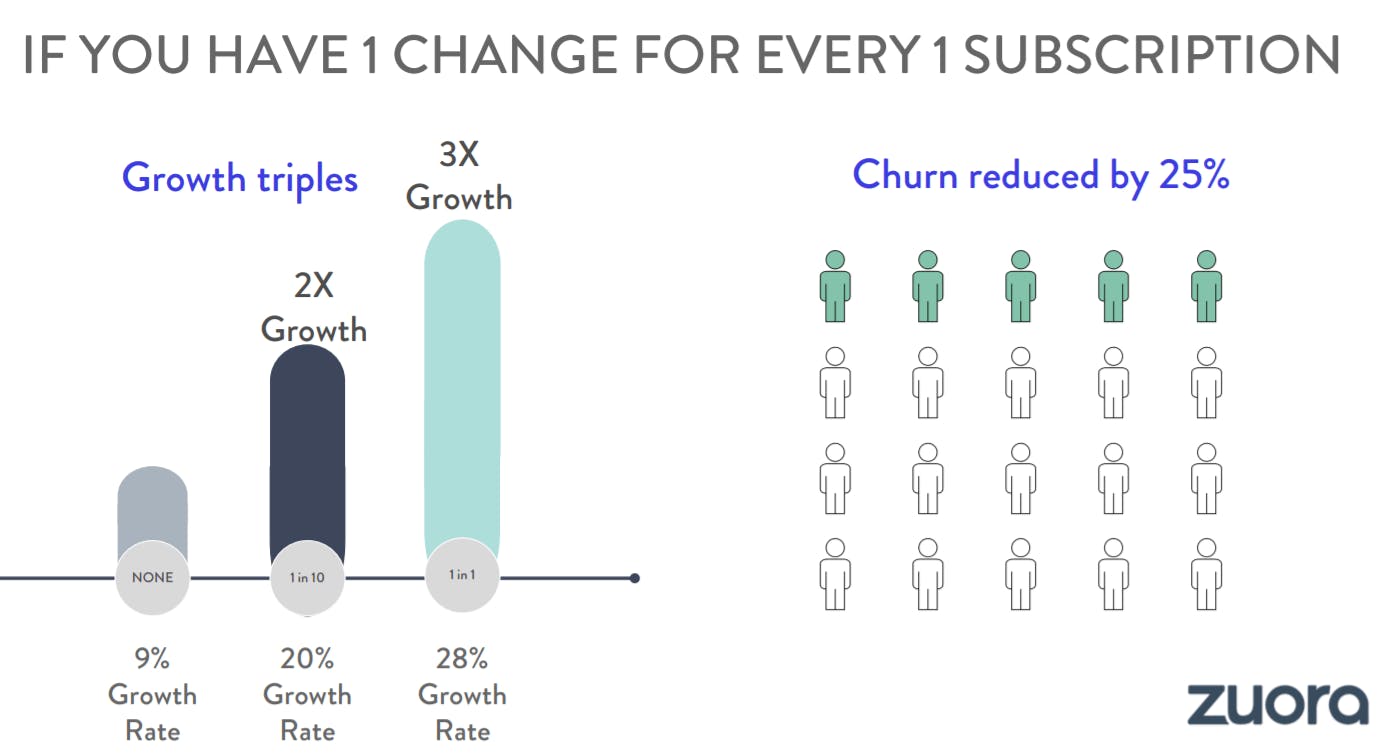
When these interactions don’t happen, companies instead have zombie subscribers or, as Amy put it, customers that aren’t engaged with your product and aren’t building a relationship with you.
You have to bill in response to usage
The final part of Amy’s presentation focused on how changes to the subscription economy, changes to subscriptions, and changes to the expectations of users opened up the door for a better billing model: one based on usage rates.
The new digital subscription economy means that you can bill based on usage, instead of hoping that people are using a software after your company guides implementation, but never really knowing for sure.
Usage insights allow companies to understand how their customer base uses their products, what roadblocks they might be hitting, what services are most helpful to their unique problems, and where potential upsell opportunities are.
That happens all the time in our daily lives. And that's what makes some of the different services that we consume so sticky. They get us. They understand what we need before we even know that we need them.
But being able to not only understand customers, but monetize that understanding, is what creates major success for subscription-based businesses.
When Zuora looked at its clients who didn’t have usage-based pricing or billing, it saw that they had about 18 percent growth year over year.
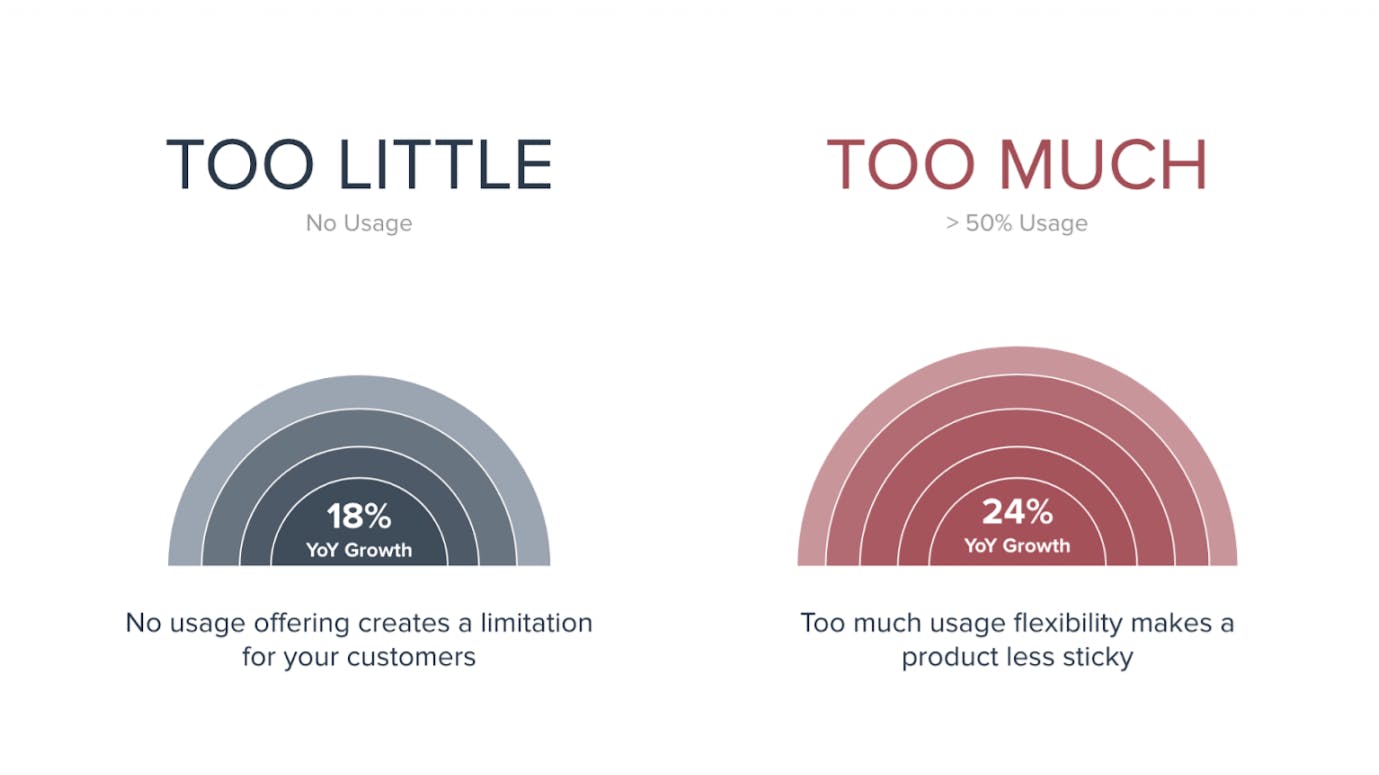
However, companies that found the sweet spot of usage billing between being too flexible and too rigid had a much higher growth rate.
Being able to offer that level of flexibility gets you in the door more often and keeps you around more often.
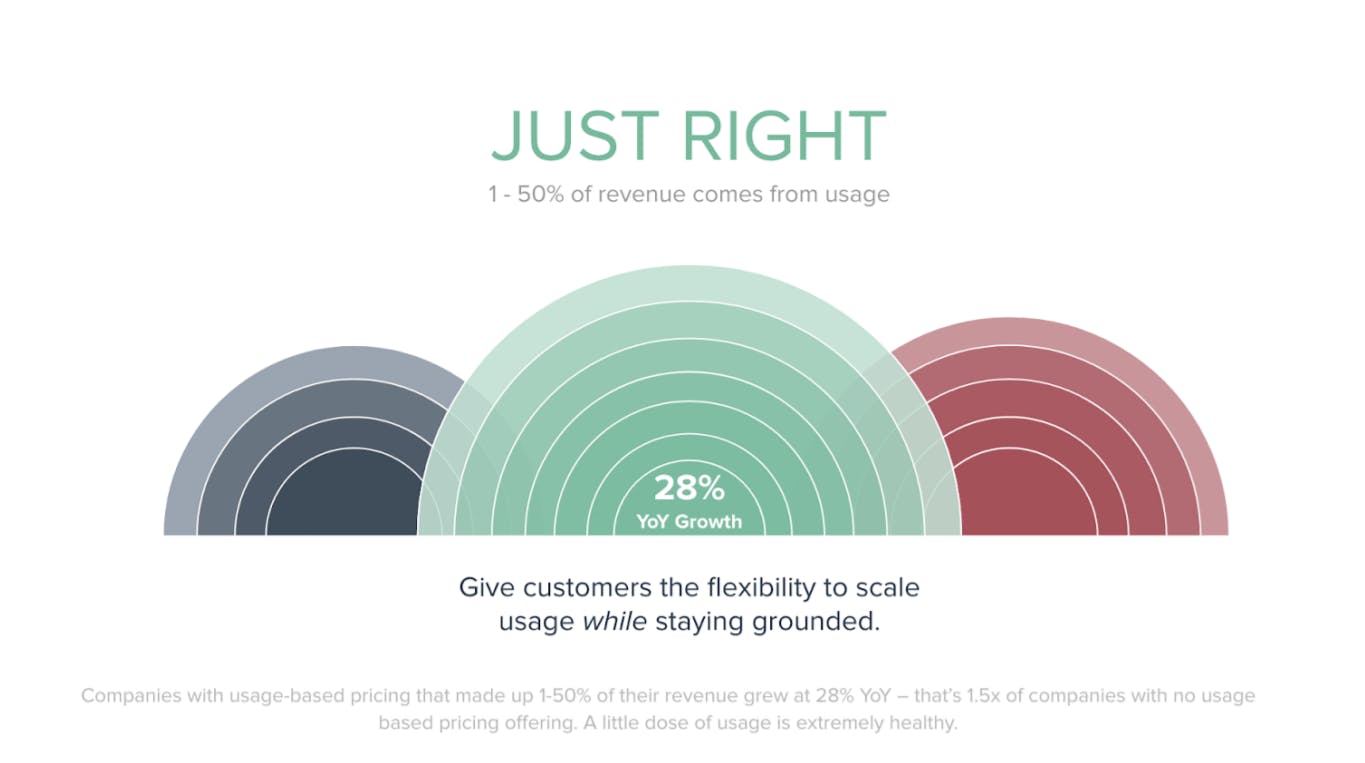
Additionally, a consumption-based model lowers the friction for people to get in and start using your product to solve the problem they experience.
By incorporating more usage-based flexibility into their pricing strategies, companies effectively reduced churn rates in response to subscriber usage changes, such as selling them on a lower usage plan rather than losing their business altogether.
Embracing the changing subscription economy grows business and relationships
Software as a service is no longer just a product, it’s an experience. Your strategy should reflect that and take into consideration the people supporting your business.
The reason we all love services like Netflix, Spotify, and Amazon Prime is because these companies have mastered transparent, flexible, responsive, and personalized service.
By focusing on how your customers use your products and responding to that through your updates, releases, value-based pricing, and support, you create predictable recurring revenue, ongoing value, and better customer relationships.
Through these stronger relationships, companies ensure that customer value doesn’t end when they sign on, but evolves and grows well into the future of their business.



